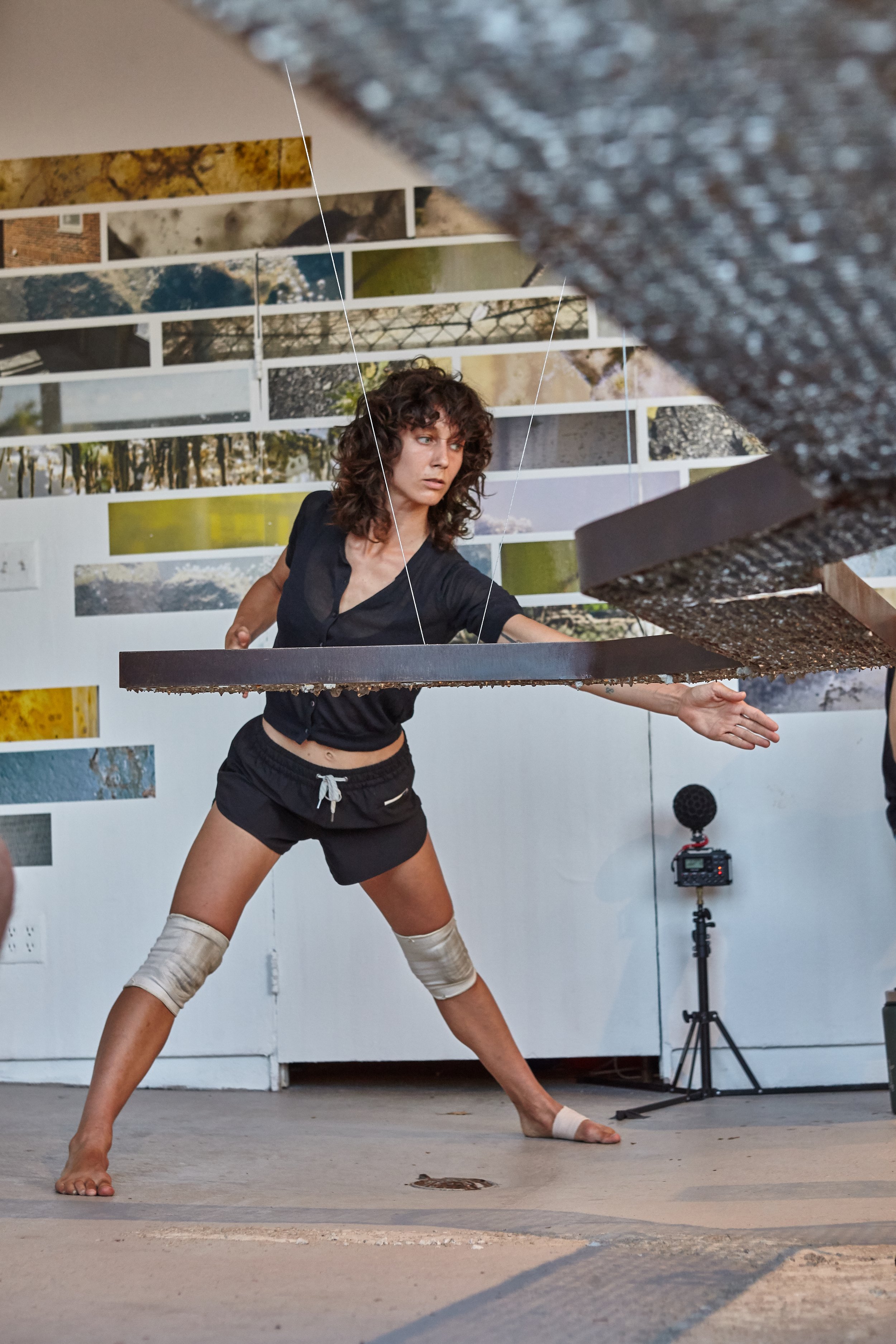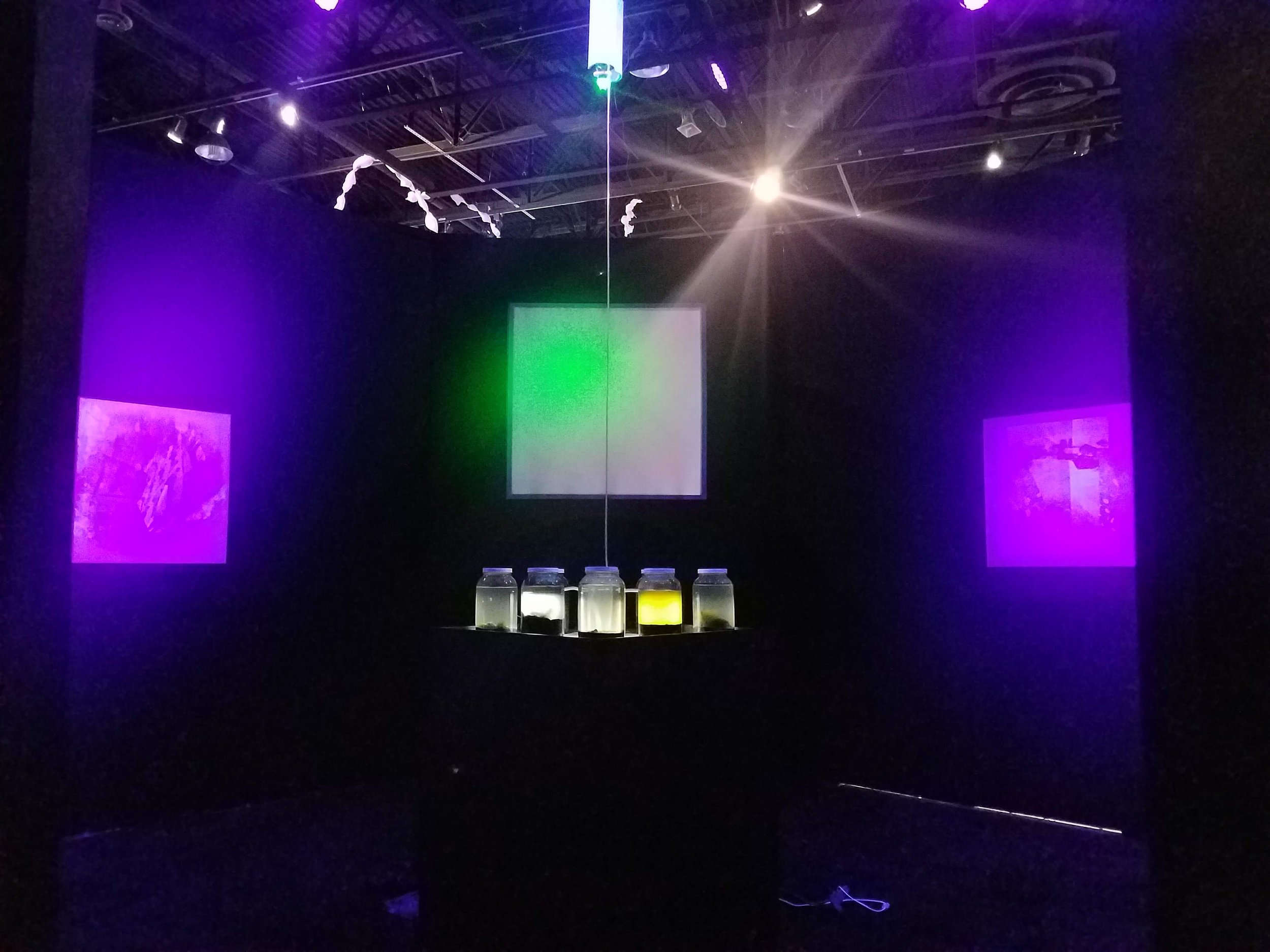Scope Collective
How might we imagine partnerships with unusual organisms for collaborative survival on our changing planet?
Exploring concepts of contamination, collaboration, culture, and exploitation, our work thus far has focused on the post-industrial Gowanus Canal in Brooklyn, New York. Emblematic of many such sites, a once important center for manufacturing has left a material, economic, and social legacy of toxicity. Through metagenomic sequencing, Dr. Elizabeth Hénaff’s research revealed that the canal’s toxic sediment harbors communities of microorganisms that, in response to their environment, evolved to actively degrade (aka. eat) the toxic compounds in this seemingly uninhabitable industrial waste. Here we explore the multiple facets of the complex relationship that humans have with contaminated waterways: the sense of place, the politics of pollution and gentrification, and the translation of scale necessary to comprehend these amazing microscopic ecologies. We draw on our varied backgrounds in visual art, scientific research, and performance and architectural experience design, to generate evocative multi-media spaces for new imaginings of collaborative survival.
Scope Collective is currently comprised of Heather Parrish, Elizabeth Hénaff, Léonard Roussel, and Seth Wenger [bios below]
Channel
Water Stories Exhibition | BioBAT Art Space | Curated by Elena Soterakis
June 2024 - June 2025
This installation is a human exercise in channeling microbial life. It offers an egress from our anthropocentric perspective of contaminated versus natural environments, and a space to contemplate our difficult to perceive but vibrant cohabitants. Multiple channels of media and materials are imagined around, and accompanied by water and living sediment harvested from the tidal system of the ebullient Gowanus Canal as it merges with the Bay Ridge Channel. Scope Collective are artists-in-residence for the duration of the exhibition, generating new work in studios hidden behind the exhibition walls and in collaboration with the lively microbiome.
Materials: canal sludge and water, 36” aquarium embedded in entry wall, 96” aquarium on wood base, 36” aquarium mounted in wall with a pump system that replicates tidal cycles; sculptural map of the Gowanus Canal made of salvaged architectural iron, steel & concrete; swings; recycled fabric; custom lighting design by Xena Petkanas; photographic inkjet prints, projection-mapped video, spatialized audio generated from content collected around the canal.



photo: Stefan Hagen



photo: Stefan Hagen





photo: Stefan Hagen

photo: Stefan Hagen
Precipitate | Open Source Gallery
Summer 2023
This work emerges from the remarkable microbiome inhabiting the Gowanus Canal’s contaminated sediment. Over many decades of deposited manufacturing waste, these microorganisms have evolved to remediate our toxic trace. Federally subsidized cleanup of the site, currently underway, entails dredging what toxic sediment can be removed and capping the rest with concrete. This will suddenly disrupt the long evolutionary process which led to the complex microbial remediation metabolisms. In the wake, the gallery becomes a portal where human and microbial environments come into relative focus - a space for contemplation of our tiny but persistent cohabitants. Movement artist Nola Smith joined collective members Seth Wenger and Léo Roussel for a live performance response to the installation.
Materials: photographic inkjet prints, salvaged architectural iron, steel, concrete, live sediment from the Gowanus Canal, glass containers, time-lapse vide, quadrophonic audio.

Precipitate | Open Source Gallery














Scope : Theater of Collaborative Survival
Depth | Science Gallery Detroit
Summer 2019
Materials: 20 ft. octagonal room, laser microscope projecting contents of water droplets, jars of Gowanus Canal sludge, grow lights, 8 cyanotype prints of micro-organisms overlaid with uv-reactive images of Gowanus urban environment (36"x36"), lights alternate between white and UVlight, 8-channel granular audio of urban sounds generatively emulating bacterial growth patterns
DEPTH | Science Gallery Detroit

Scope: Theater of Collaborative Survival | installation view | cyanotypes with UV light, human urban scapes

Scope: Theater of Collaborative Survival | installation view | cyanotypes with white lights, water droplet microscopy

Scope: Theater of Collaborative Survival | installation view

Scope: Theater of Collaborative Survival | installation view

Gowanus sludge jars at the beginning of the exhibition with grow lights and live-feed video

Gowanus sludge environment growth at end of exhibition





Cyanotypes, microscopy of Gowanus Canal environment, with transluscent imagery of Gowanus human-scale environment screenprinted on glass surface
Links
Channel | BioBAT Art Space https://www.biobatartspace.com/current
Precipitate | Open Source Gallery https://open-source-gallery.org/scope/ https://open-source-gallery.org/wp-content/uploads/2022/12/Press-Release-SCOPE.docx.pdf
Scope Collective https://collaborativesurvival.theater
Scope | Video/Sound https://vimeo.com/857636764/642cc9b600?share=copy https://vimeo.com/363354632
https://soundcloud.com/leo_nerd/scope-20200408-binaural-render-full
https://soundcloud.com/leo_nerd/scope-1min-binaural-snippet
Collaborator Bios
Elizabeth Hénaff is a computational biologist with an art practice whose research focuses on the ubiquitous and invisible microbial component of our environment. This inquiry has produced a body of work that ranges from scientific articles in peer-reviewed journals, to projects with landscape architects, to artworks shown nationally and internationally. Some recent works include commissions for the Storefront for Art and Architecture in NYC, the Detroit Science Gallery, and the Okayama Art Summit in Japan. She holds an Assistant Professor position at the NYU Tandon School of Engineering and teaches BioDesign for the Integrated Design and Media program. elizabeth-henaff.net
Léonard Roussel is an acoustic engineer, audiovisual designer, and creative technologist. His engineering research studies the behavior of sound in architectural spaces and urban environments, applied to a variety of projects in the Americas and overseas. His creative practice explores the relationship between humans and volume of physical space, using generative and spatial audio technologies. It has been featured in European media art festivals such as Fête des Lumières in Lyon and the Berlin Festival Of Lights, museums in New York City including the Rubin Museum, Cooper Hewitt, Knockdown Center, and documentary films. leonardroussel.com
Seth A. Wenger is a public historian and production designer captivated by the relationship of sound and place. He holds a Master of Arts in Religion from Yale, with an emphasis on early American Music History and Public Humanities. His public humanities work with the Brothertown Indian Nation is an effort to decolonize Native American archives through novel sound and visual documentation technologies for digital repatriation. His site-based creative practice in sound and moving image design has been supported by various grants and residencies, and performed nationally and internationally.

